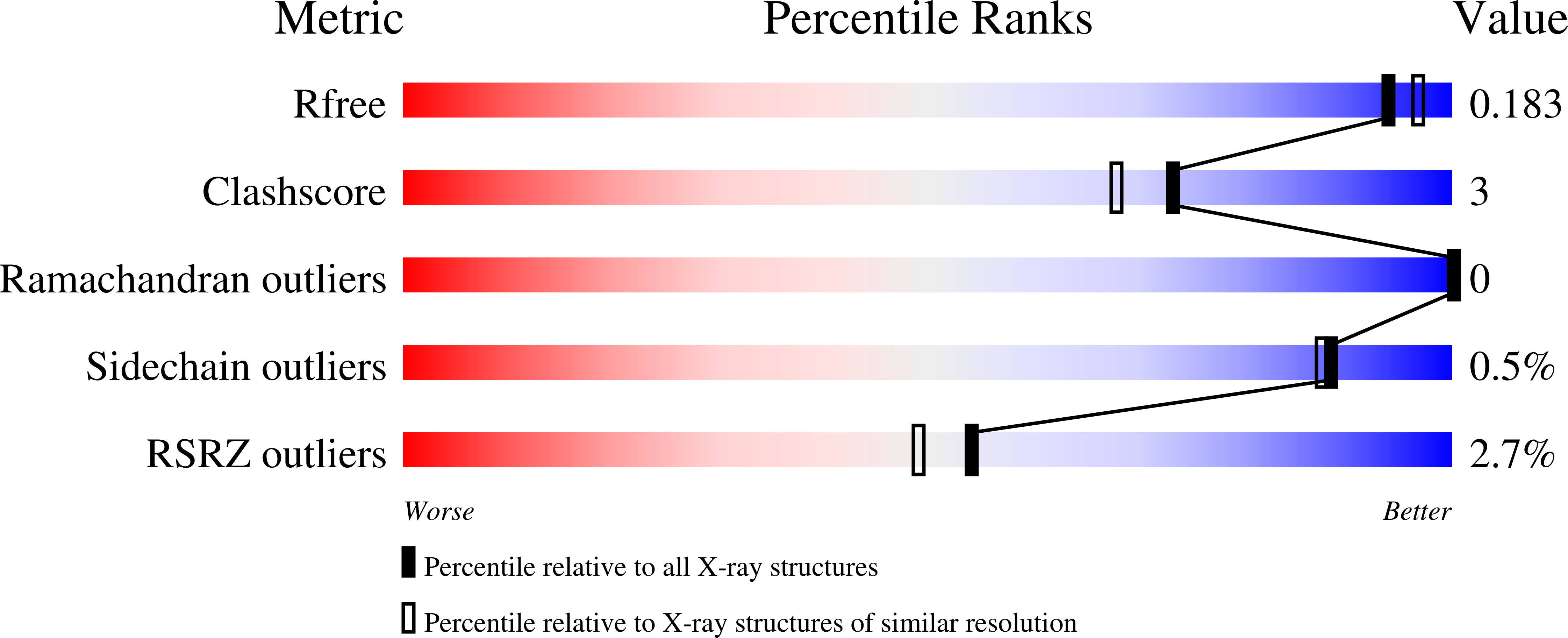Biochemical and structural analysis of Gox2181, a new member of the SDR superfamily from Gluconobacter oxydans.
Liu, X., Yuan, Z., Adam Yuan, Y., Lin, J., Wei, D.(2011) Biochem Biophys Res Commun 415: 410-415
- PubMed: 22040731
- DOI: https://doi.org/10.1016/j.bbrc.2011.10.083
- Primary Citation of Related Structures:
3AWD - PubMed Abstract:
Gluconobacter oxydans enable to oxidize sugars and polyols incompletely to corresponding materials with potential industrial applications, containing around 75 putative dehydrogenases. One of these putative dehydrogenases, Gox2181, was cloned and expressed in Escherichia coli BL21 (DE3), and its X-ray crystal structure was determined to a resolution of 1.8 Å. Gox2181 formed a homo-tetramer in the crystal that was coincident with the apparent molecular mass determined in the solution. Gox2181 displayed α/β-folding patterns, the conserved catalytic tetrad of Asn119-Ser147-Tyr162-Lys166, and the NAD-binding pocket, which aligned well with the 'classical' type of short-chain dehydrogenase/reductase (SDR) enzymes. Gox2181 was denoted SDR51C based on the SDR nomenclature system. The purified recombinant Gox2181 was demonstrated to be NAD(H)-dependent and active towards a wide range of substrates, including sugar alcohols, secondary alcohols, ketones, and ketoses. Among the substrates tested, Gox2181 displayed preference for secondary hydroxyl or carbonyl groups, showing low K(m) values with d-arabitol and butanedione.
Organizational Affiliation:
State Key Laboratory of Bioreactor Engineering, NewWorld Institute of Biotechnology, East China University of Science and Technology, Shanghai 200237, China.


















